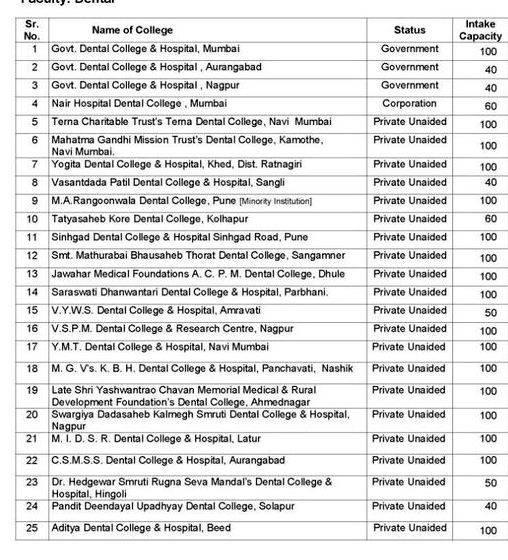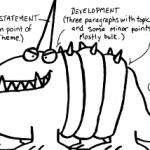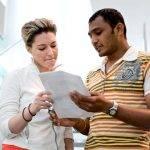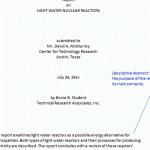A candidate for admission to the M.D.S. course (Master of Dental Surgery) must have a degree of B.D.S. (Bachelor of Dental Surgery) from a college and university recognised by a Dental Council of India. Candidates not possessing, a recognised dental ualification for the above purpose should secure the prior approval of his / her qualification by the Dental Council of India before admission to the M.D.S. course. Minimum 50% of marks in entrance test for all categories.
The course shall be given in the following forms:
- Didactic Lectures, seminars, demonstrations on clinical Laboratory techniques once a week (each)
- There will be Journal Club once a week. Each student will be assigned a Journal of Prosthetic Dentistry, the International Journal of Prosthodontics, Oral Rehabilitation or of allied sciences to review the most important articles that have appeared in the Journals Irrespective of topic to give practice to the student in comprehension and presentation of the data and his own views before a group.
- Clinical case conference once a week the student will present all data including case records, models, the radiographs of photographs.
- The students will work on patients in the clinics, both in the mornings and in the afternoons under the supervision of teachers.
- The student will undertake the Laboratory work for the patients who are under their treatment.
- Lectures in basic sciences-attendance at this course given by the basic science disciplines will be compulsory. This is usually given once every year and attendance at these courses will be essential.
- Concurrent clinical training each student will be required to undergo compulsory concurrent clinical training for this purpose in Plastic Surgery, Otolaryngology and Radio diagnosis in the general hospital or Medical college.
- Training in methodology of teaching – the postgraduate will attend the undergraduate classes to learn the methodology teaching and they will be encouraged to teach the undergraduate students after preparing lectures and getting it corrected by a faculty member under whom he will work.
- The candidate will get training in various aspects of Prosthodontics during the three years both in the clinics and laboratory.
- Internal assessment examination will be conducted every 6 months.
Every candidate pursuing MDS degree course is required to carry out work on a selected research project under the guidance of a recognized graduate teacher. The result of such a work shall be submitted in the form of a dissertation. The dissertation is aimed to train a postgraduate student in research methods and techniques. It includes identification of a problem, formulation of a hypothesis, search and review of literature getting acquainted with recent advances, designing of a research study, collection of data, critical analysis, comparison of results and drawing conclusions. Every candidate shall submit to the Registrar of the University in the prescribed performa, a synopsis containing particulars of proposed dissertation work within four months from the date of commencement of the course on or before the date notified by the University. The synopsis shall be sent through the proper channel such synopsis will be reviewed and the dissertation topic will be registered by the University.
No change in the dissertation topic or guide shall be made without prior approval of the University.
The dissertation should be written under the following headings:
- Introduction
- Aims and Objectives of Study
- Review of Literature
- Materials and Methods
- Results
- Discussion
- Conclusion
- References
- Tables
- Annexure
The written text of the dissertation shall be not less than 50 pages and shall not exceed 150 pages excluding references, tables, questionnaires and other annexure. It should be neatly typed in double line spacing on one side of paper (A4 size,8.27” X 11.69”) and bound properly. Spiral binding should be avoided. The dissertation shall be certified by the guide, head of the department.
Six copies of dissertation will be prepared by the students. One copy will be submitted to the department four copies shall be submitted to the registrar(Evaluation),Six months before final examination on or before the dates notified by the University. One will be student’s own copy.
The dissertation shall be valued by examiners appointed by the University. Approval of dissertation work is an essential precondition for a candidate appear in the University examination.
10. Syllbaus for Course in Prosthodontics
- A. Basic sciences
- Biology and anatomy of dental tissues
- Anatomy of the stomatognathic system.
- Biology and physiology enamel, dentine Cementum, pulp and periodontium.
- Pathology of the periodontal, Pupil and periapical tissues
- Anatomy and histology of oral mucous membrane.
- Anatomy of T.M.J. its movements and Myofacial pain dysfunction syndrome.
- Anatomy physiology and function of the masticator system.
- Growth and development of face jaws and teeth.
- Endocrine glands in particular reference to Pituitary, Parathyroid and Thyroid glands.
- Pathology of dental tissues and oral cavity.
- Dental plaque in relation to dental disease.
- Sensory perception and pain
- Oral pre-cancerous lesions.
- Malignant lesions of the oral cavity and head and neck region.
- Developmental anomalies of face, jaws and teeth.
- Gerodontics
- Consequences and management of age changes in the dentition.
- Medical conditions and medications affecting dental treatment
- Nutrition in geriatric patients
- Anthropology as applied to craniofacial region.
- Genetics in Dentistry.
- Normal occlusion, development of occlusion in deciduous, mixed and permanent dentitions.
- Nutrition.
- Role of Vit A, C and B complex in oral mucosal and periodontal health.
- Role of Calcium and Vit D in growth and development of teeth and jaws.
- Mastication, swallowing, Speech and deglutition mechanism.
- Salivary glands and saliva,
- Indices in diagnosis of dental caries and periodontal diseases.
- Sterilization in dentistry
- Tooth numbering systems.
- Introduction to Biostatistics.
- Scope and need for statistical application to biological data.
- Definition of selected terms- scale of measurements related to statistics.
- Methods of collecting data.
- Presentation of data statistical diagrams and graphs.
- Dentist technician communication- Lab work authorization form and instruction.
- Dental Materials:
- Physical, mechanical and biological properties of modem dental materials.
- Gypsum products used in prosthodontics.
- Die and counter die materials.
- Various resins used in prosthodontics including Denture base materials
- Impression materials used in Dentistry.
- Duplicating materials.
- Metals and alloys used in Dentistry.
- Dental Waxes including inlay casting wax
- Investments.
- Casting machines procedures and defects.
- Soldering and Welding
- Cements – restorative and looting
- Composites – various generations and system in order of development. Composition, uses and manipulation.
- Tissue conditioner and soft reline.
- Porcelain Including Porcelain fused to Metal alloys.
- Porcelain furnace, firing and techniques.
- Mechanics of tooth cutting (burs and points)
- Cutting, polishing and finishing agents.
- Implant materials.
- Bonding agents enamel and dentin bonding agents and various other adhesives.
- Dental Materials:
- Biology and anatomy of dental tissues
- B. Complete Denture Prosthodontics:
- Anatomy and physiology of edentulous mouth.
- Diagnosis and treatment planning for a completely edentulous mouth.
- Oral aspects of systemic diseases of prosthodontic interest.
- The problem of reduction of residual ridges.
- Preprosthetic surgery.
- Impressions in Complete Denture Prosthodontics.
- Objectives and principals of impression making.
- Philosophies and concepts of impression making
- Materials and techniques of impression making
- Posterior palatal seal principles and techniques.
- Articulators
- Brief history and classification
- Requirements and limitations
- Role in CD fabrication
- Face bow in complete denture construction.
- Different type of face bows.
- How to orient face bow
- Role of face bow record in complete denture fabrication
- Hinge axis
- Concept of hinge axis with knowledge about different schools of thought
- Method to locate
- Significance in CD fabrication
- Recording of mandibular movements and maxillo mandibular relations in edentulous patients.
- Definitions and changing concepts of centric relation
- Methods to record CR.
- Vertical relation methods to record and verify.
- Selection and arrangement of anterior teeth including guidelines for complete denture esthetics.
- Complete denture occlusion.
- Selection and arrangement of posterior teeth
- Varification of maxillo mandibular relation records.
- Try in of complete dentures.
- Laboratory procedures involved in complete denture construction.
- Denture Insertion.
- Patient’s education and complete denture maintenance
- Compliance associated with dentures.
- Relining and rebasing of denture.
- Denture repair.
- Immediate dentures.
- Transitional dentures.
- Overlay dentures.
- Obturators on complete denture.
- The single complete denture.
- Implants for the edentulous arches.
- Geriatrics complete denture patients.
- Preventive prosthodontics
- Epidemiology of edentulous ness.
- Role of computers in prosthodontics
- C. Partial Denture Prosthodontics
- Introduction and terminology used in partial denture prosthodontics.
- Examination, Diagnosis and treatment planning in partial denture prosthodontics.
- Classification of partially edentulous arches.
- Components of removable partial dentures and their functions.
- Major connectors
- Minor connectors
- Rests and rest seats
- Direct retainers
- Indirect retainers
- Denture base considerations and teeth.
- Stress brakers.
- Principles of removable partial denture (R.P.D.) design and RPI concept.
- Surviving.
- Mouth preparation for removable partial denture including preparation of abutment teeth.
- Impression material and procedures for partially edentulous mouth.
- Support for the distal extension denture base.
- Occlusal relationship and arrangement of teeth.
- Laboratory procedures involved in cast partial dentures.
- Trying in and adjustment of cast frame work.
- Processing, finishing, delivery and instructions about maintenance of removable partial dentures.
- Repairs and additions to removable partial dentures.
- Acrylic partial dentures.
- Immediate partial dentures
- D. Fixed Prosthodontics:
- Diagnosis and Treatment Planning.
- Periodontal considerations in fixed prosthodontics.
- Fundamental of Occlusion.
- Bio-mechanical principles of tooth preparation.
- Individual tooth preparation.
- Complete Metal Crown
- Partial veneer crown for Ant. and post teeth.
- Porcelain jacket crown
- Preparations for intra-coronal restorations.
- Preparations for extensively damaged or endodontically treated teeth.
- Provisional or temporary restorations.
- Fluid control and soft tissue management.
- Impression material and techniques.
- Working casts and dies.
- Interocclusal records techniques and material
- Articulation of casts.
- Wax patterns.
- Articulators in fixed partial denture prosthodontics
- Precision and semiprecision attachment.
- Connectors in FPD
- Investing and casting
- Occlusal equilibration.
- Finishing and cementation.
- Pontics.
- Cementing Medium.
- Full mouth rehabilitation-philosophies, techniques, clinical and lab procedure.
- Porcelain fused to metal restorations.
- Porcelain Laminates.
- Resin bonded retainers(Maryland bridges)
- Fixed removable Prosthodontics.
- Solder joints and other connectors.
- E. Maxillofacial Prosthodontics:
- Dentist and Patient interaction Psychological status of the patient Social support system.
- Chemotherapy, radiation therapy their effect on oro-dental tissue.
- Prosthodontic reconstruction of Acquired mandibular defects.
- Mandibular Guidance appliance
- Speech prosthesis
- Rehabilitation
- Clinical and laboratory steps for their fabrication.
- Prosthodontic reconstruction of Acquired developmental defect of maxilla
- Obturators
- Speech appliance
- Clinical and laboratory steps for their fabrication.
- Restoration of Acquired and developmental Facial defects
- Eye
- Auricular
- Nasal
- Lip
- Clinical and laboratory steps for their fabrication.
- Cranial and Facial implants
- Recostructive pre prosthetic surgery
- Maxillofacial prosthesis materials
- Miscellaneous prosthesis
- Splints and stents
- Radiation carrier prosthesis.
- Methods of Retention for maxillofacial prosthesis.
- F. Evidence based practice in Dentistry
- Introduction to EBD
- How to search for evidence
- evidence based practice in FPD
- evidence based practice in CD
- evidence based practice in RPD
- evidence based practice in Implantology and MFP
- evidence based practice in esthetic dentistry
- Basic Knowledge about how to screen literature for evidence.
- G. Implants in prosthodontics:
- Introduction to Implantology
- Brief History and evolution.
- Diagnosis and Treatment Planning
- Rationale for dental Implants
- Medical Evaluation of the Implant Patient
- Prosthetic Options
- Diagnostic Imaging and techniques
- Divisions of Available Bone
- Bone Density
- Dental Evaluation
- Fundamental Science.
- Bone Physiology and Metabolism.
- Pharmacologic for Dental Implants
- Bone Response to Mechanical Loads.
- Osseo integration, bio integration and Fibrosseointegration
- Implant Prosthodontics and Maintenance
- Principles of Cement-Retained and Screw-Retained Fixed Implant Prosthodontics.
- Occlusal Considerations for Implant-Supported and tissue supported Prostheses
- Implant supported prosthesis-clinical and lab procedures.
- Maintenance of Dental Implants.
- H. Esthetic Dentistry
- Principles of esthetics
- Light and Shadow
- Colour principles
- The principle of form
- The principle of perception.
- Dentin bonding agents
- Composition and clinical considerations
- Colour modifier and Opaquers
- Composite resins
- Composition and manipulation
- Technique for direct and indirect composite restorations
- Porcelain Fused to metal restorations
- All ceramic restorations
- Laminates-Clinical and Laboratory procedure for porcelain and composite laminates
- Bleaching
- Dynesthetic concept of smile.
- Principles of esthetics





 4 aout 1789 dissertation writing
4 aout 1789 dissertation writing Lancaster university history dissertation prospectus
Lancaster university history dissertation prospectus Lobjectivation de la faute dissertation writing
Lobjectivation de la faute dissertation writing Nicolas bouvier lusage du monde dissertation writing
Nicolas bouvier lusage du monde dissertation writing Jabref entry type dissertation proposal
Jabref entry type dissertation proposal






